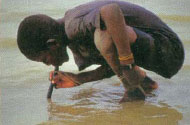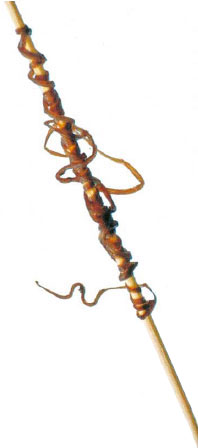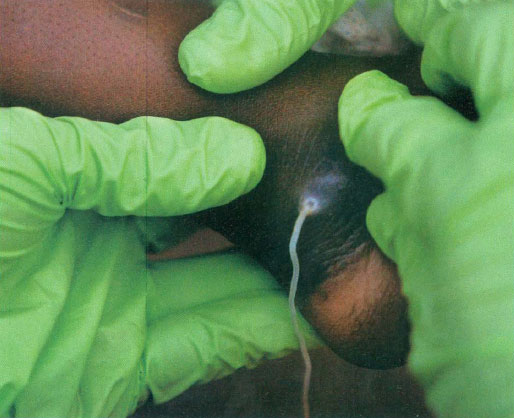This article was published in the July 2011 issue of National Geographic Magazine.
Farewell to Guinea Worm It's not every day that a disease disappears, but Guinea worm disease may be next, after smallpox. Thanks to international efforts led by the Carter Center, just 1,797 cases were reported worldwide last year, most in what is now South Sudan.  In 2012, public health officials aim to push that number down to zero.
In 2012, public health officials aim to push that number down to zero.
The triumph hasn't been easy; Guinea worm isn't vulnerable to vaccines or medication. The eradication effort's primary weapon: education. Local volunteers teach African villagers to strain potentially contaminated water through fabric or filter equipped straws. They explain the worm's life cycle, so that people with emerging worms will avoid entering stagnant water, like ponds, where larvae are deposited. The searing pain caused when the worms exit the body often leaves victims unable to work during key farming periods. But armed with knowledge and tools, communities are close to wiping out this ancient disease. View PDF >>


In Ghana, health workers massage a child's ankle to aid the gradual extraction of a mature guinea worm (left). The worms can grow more than a yard long and emerge slowly, often over several weeks. A preserved specimen (above) is about a foot long.
Please sign up below for important news about the work of The Carter Center and special event invitations.